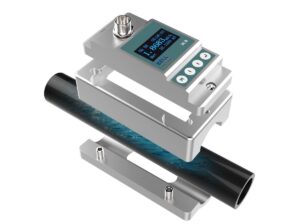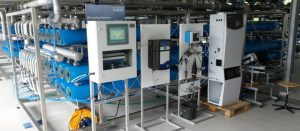![]()
Oil and natural gas are part of everyday life. Together, these fossil fuels represent 86 % of global energy demand. Products produced from oil and gas are used throughout the world as fuel (such as gasoline and diesel fuel), or as building blocks for the petrochemical and chemical industries.
Petroleum Oil & Gas Downstream
The process to extract, transportation, process and refine oil and gas is complex and wrought with danger to workers and to assets. One of the most dangerous is the risk of fire or explosion due to the presence of flammable gases and liquids. Toxic gases and chemicals encountered throughout the processes add the risk of asphyxiation, burns, cancer and system corrosion.

To reduce the risks to life, property or the environment, oil and gas companies follow mandatory safety practices. Portable and fixed gas detection systems, and flame detection systems play a critical role in monitoring the environment for hazards. Respiratory or other safety gear can then be provided to workers to keep them safe.
The good news is that the oil and gas industry, as a result of understanding and addressing hazards through mandatory regulations, has fewer safety incidents today than in the past.
The oil and gas industry is typically divided into three major sectors: upstream, midstream and downstream.
Petroleum Oil & Gas Refineries Common Hazards
The refining process releases several different hazards into the atmosphere. In addition to risks of industrial exposure to chemicals, and accidents such as fire and explosion, there are health and hygiene hazards caused by air contaminants which may be part of the normal refining process or that can escape unexpectedly in an oil refinery. Crude oil contains thousands of hydrocarbons and other chemicals which may result in short- and long-term health problems, corrosive burns and or asphyxiation to individuals working in refineries. Therefore, gas & flame detectionare essential in the different units of a refinery, but some specific risks can also be met in the different units and should be monitored such as listed below.
Gas and Flame Detection Systems in Refining
Fixed Gas and flame detection systems are used throughout refineries to detect leakage or spills of toxic or flammable gases. The sensor selected for detection depends upon careful assessment of the potential hazards, while placement and configuration such as open path, fixed point or a combination of systems help ensure coverage across the area while minimizing false positives. Teledyne Gas & Flame Detection offers consulting, design, integration, commissioning and training for customers to ensure effective solutions for their specific situation.
Portable gas detection systems are worn by workers and contractors based on the standard operating procedure of the refinery. Typically, gas detectors are worn in all zones deemed as potentially hazardous. With the decreasing size of multi-gas detectors, many refineries are choosing to use these instead of single gas detectors. There are specific applications such as confined space, that require the use of portable and/or transportable gas detectors to comply with regulations.
Confined Spaces
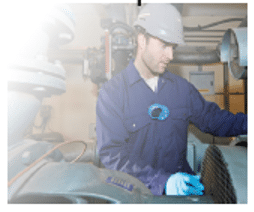
Entry into confined spaces are common in refineries because of the numerous collections of tanks, reactors, vessels and ducts. Workers have died because they did not take the necessary precautions and have the proper equipment before entering a confined space.
Potential Hazards: Oxygen Deficiency, H2S, SO2, NO2 ,NH3 , CO , HCl ,Cl2, H2
Hot work
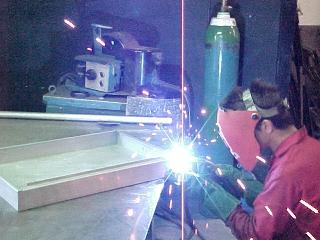
Hot work operations are those such as welding, brazing, cutting, grinding, soldering and thawing that create heat, spark and hot slag that may ignite flammable and combustible materials in the area of hot work activities. In the event that work, and equipment cannot be located outside of hazardous areas, precautions must be followed to enhance safety.
The atmosphere is monitored before starting hot work with a gas detector, and typically is reassessed throughout the duration of the work. Hot work that is done in a confined space must also follow confined space regulations.
Potential Hazards: H2S, Flammable gases
Turnarounds and shutdowns
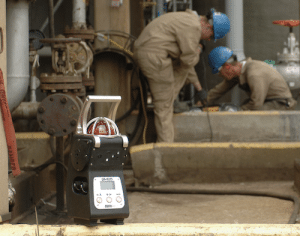
Turnarounds are scheduled maintenance and cleaning of processing and storage units as part of normal operating procedures. Companies spend considerable time planning for such events so that they can execute the maintenance as quickly as possible to reduce time for the refinery. Shutdowns are usually unexpected stoppage of work within a refinery. In either case, it is common for refineries to utilize service companies that bring contractors to the site for the work to be done. These contractors are equipped with PPE, including portable gas detectors, to wear for the duration of the turnaround. The transportable BM 25 has been specifically designed for team protection or area surveillance where fixed detection systems are not suitable.
Teledyne Gas & Flame Detection Products and Solutions
There are several technologies that can be employed to detect gases present in petroleum oil and gas refineries. Electrochemical sensors are used to monitor oxygen rates in the air, or the presence of toxic gases such as CO, H2S, Cl and Cl2. Semi-conductor sensors are used where there are high concentrations of H2S or where the ambient temperature is high. Catalytic and infrared sensors are used for the detection of explosive gases such as CH4 or carbon dioxide (CO2). Infrared sensors are also recommended for corrosive atmospheres or where high levels of H2S are present. At Teledyne Gas & Flame we develop products that uses all these different technologies so that you can focus on the job at hand.
Visit our website: www.teledynegasandflamedetection.com & follow us on LinkedIn!
Click here to see Teledyne Gas & Flame Detection’s Products and Solutions.Click here for related articles and news
Subscribe to our E-Newsletters
For companies that demand the most reliable gas and flame detection solutions, Teledyne Gas and Flame Detection offers more than 100 years of proven experience in industries as diverse as oil gas, food beverage, marine and public utilities Always sensing safety, everywhere you look, Teledyne’s global portfolio of products and safety solutions are …
Source of Article

